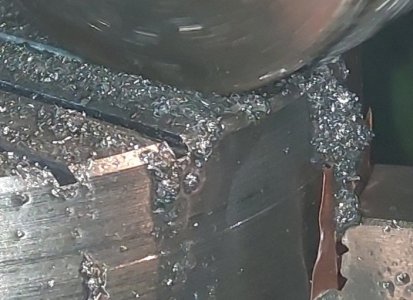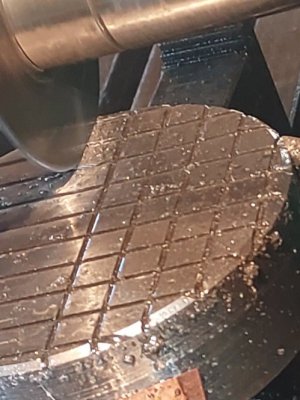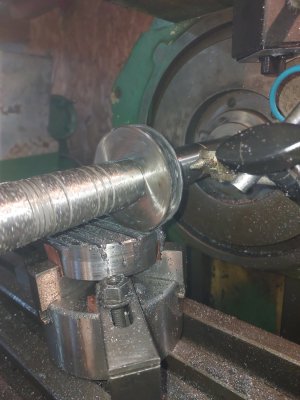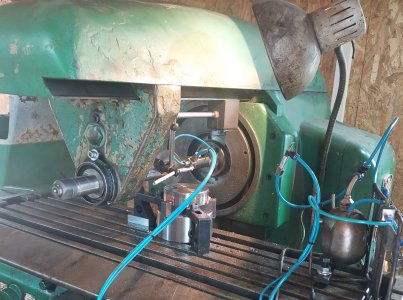I do not feed at 30 mm/min. I feed manually and try to make (small) chips not dust without putting to much force on the tool.
I run the 63 mm slitting saw at 400 RPM, Vc = 79 m/min. That is much faster than the 30 m/min cutting speed for HSS tools I normally use in steel.
I use conventional milling (not climb milling) and lock all the axis that shouldn't move.
The tool path on the part is lubricated using a brush and some oil.
OK, thank you for clarification.
However, that unfortunately doesn't say much about what I'm most curious about,and what will help anyone else looking for numbers, the feed per tooth.
When I feed manually I still keep track of my speed (by for example making sure I turn the crank once per second which is 5mm on my mill or 300mm/min or about 12ipm). Perhaps that's because when I was learning machining I was thought to calculate my feeds and speeds then run with these and adjust them further. So there is always some specific numeric feed speed I'm shooting for when feeding by hand.
As for making chips not dust, it's a bit relative. When I first saw the "chips" it made at 300mm/min they were only barely bigger than dust. At 60mm/min they were quite close to dust, but still one could take them between the thumb and index finger and feel/see individual chips. Have a look at this photo:

Those chips are made at 60mm/min,they don't appear that much different from these that were made at 5x the feed speed:

As for the surface speed you mentioned. It is significantly faster than recommended for hss in steel.(even free machining steel) I'm interested in how much of slitting do you do at that sfpm? Are we talking about an odd screw head once per year, slitting one part a couple of inches long from time to time, or running meters of cuts? Probably, not meters of cuts... Everyone that uses hss at a home shop knows what happens when you run hss too fast. It cuts, it throws beautiful blue chips, for a short while, then the cutting edge dissapears and you have to resharpen it. It is perfectly possible to run it fast for short amounts of time. If it has no opportunity to overheat (due to a short cut for example) it may be fine.
The usual recommendation is 20m/min up to 40m/min in Surface speed is quite flexible as long as your feed per tooth (in case of it being low) and cooling (in case if it being rather high) are adequate.
Absolutely not.. 25m/min is close to 80ft/min

Are you perhaps confusing the surface speed with the feed speed?
Three of my parts with a total of 3m (9ft) of slitting saw cuts say 25m/min is absolutely a correct surface speed to run them. It is exactly 75ft/min. However you're going to be perfectly fine running it from 0m/min up to ~40m/min.
You may run them slower or faster within reason as any hss tool, but this is my recommendation based on my recent experience of using it.






